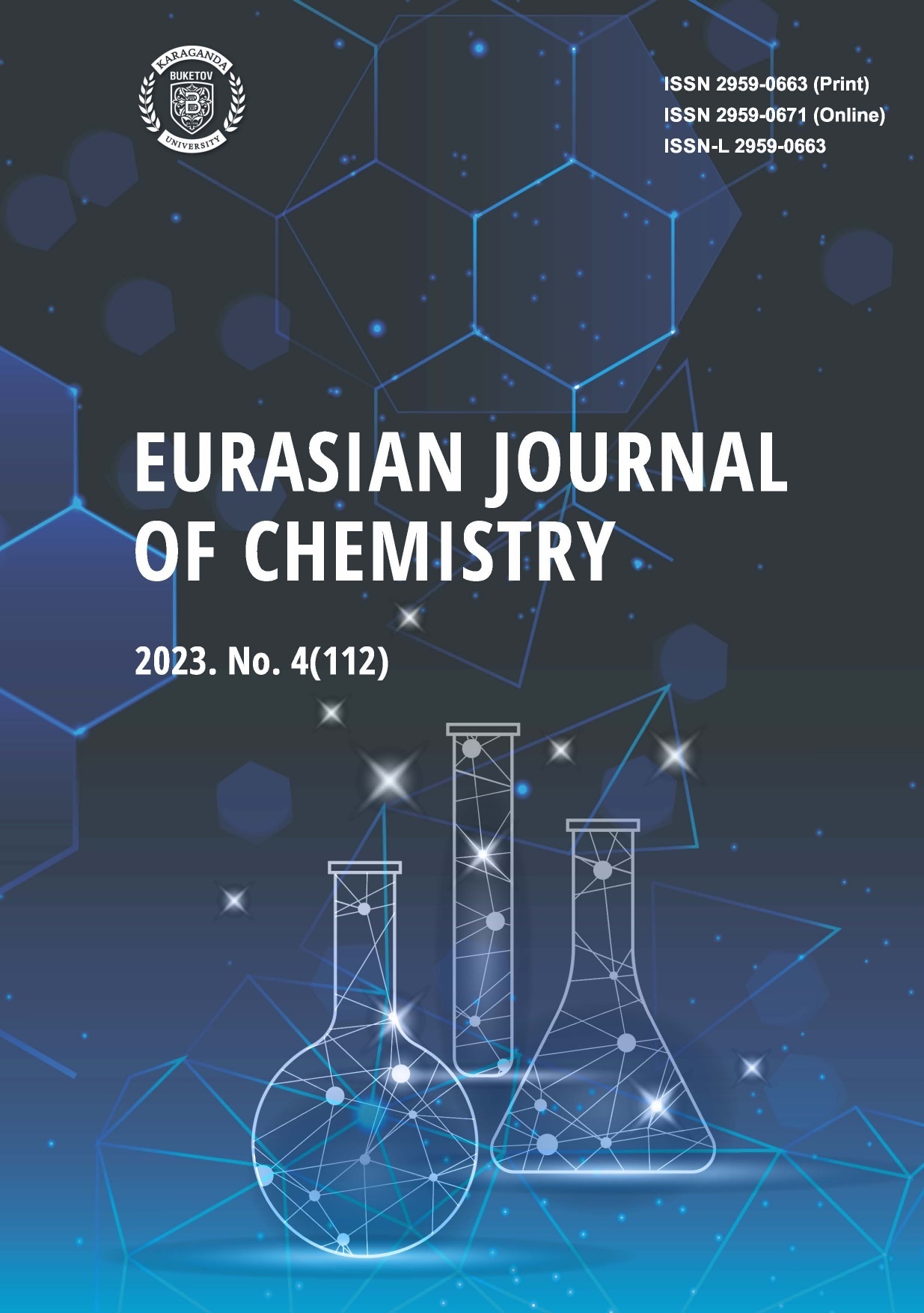Development of Methods to Obtain Composite Materials from Organoclays
DOI:
https://doi.org/10.31489/2959-0663/4-23-14Keywords:
bionanocomposite, halloysite nanoclay, silver clay, bacteridic properties, hydrophobization, organoclay, silver-modified, composite materialAbstract
The paper presents methods to obtain a bionanocomposite from hydrophobic halloysite with bacteridic properties. During the study using TEM analysis, it was established that Karaganda halloysite has a natural nanostructured material and has a cylindrical in shape (halloysite nanotube HNT). It was shown that bactericidal properties of nanoclays are due to exchange reactions between Ag+ and with active groups of nanoclay, where free H+ ions are present. The presence of several peaks characteristic of silver was detected by energy-dispersive X-ray spectroscopy, indicating exchange reactions involving silver. The bactericidal properties of silver-modified halloysite were proven using in situ analysis with live bacteria. The observed displacements of interlayer spaces from values of 9.997 Å to 17.51 Å in the diffraction patterns confirmed the successful intercalation of octadecylamine into the nanohalloisite galleries. Such medicinal bionanocomposite materials can be used as carriers of various vitamins and drugs due to their high adsorption properties. A study to obtain bactericidal oleophilic (hydrophobic) bionanocomposites based on Karaganda halloysite was carried out for the first time and it includes the stages of processing halloysite with silver ions and the stage of hydrophobization of bactericidal halloysite.
Downloads
Published
How to Cite
Issue
Section
License
This work is licensed under a Creative Commons Attribution-NonCommercial-NoDerivatives 4.0 International License.
Authors retain copyright and grant the journal right of first publication with the work simultaneously licensed under a Creative Commons Attribution License (CC BY-NC-ND 4.0) that allows others to share the work with an acknowledgement of the work's authorship and initial publication in this journal.




